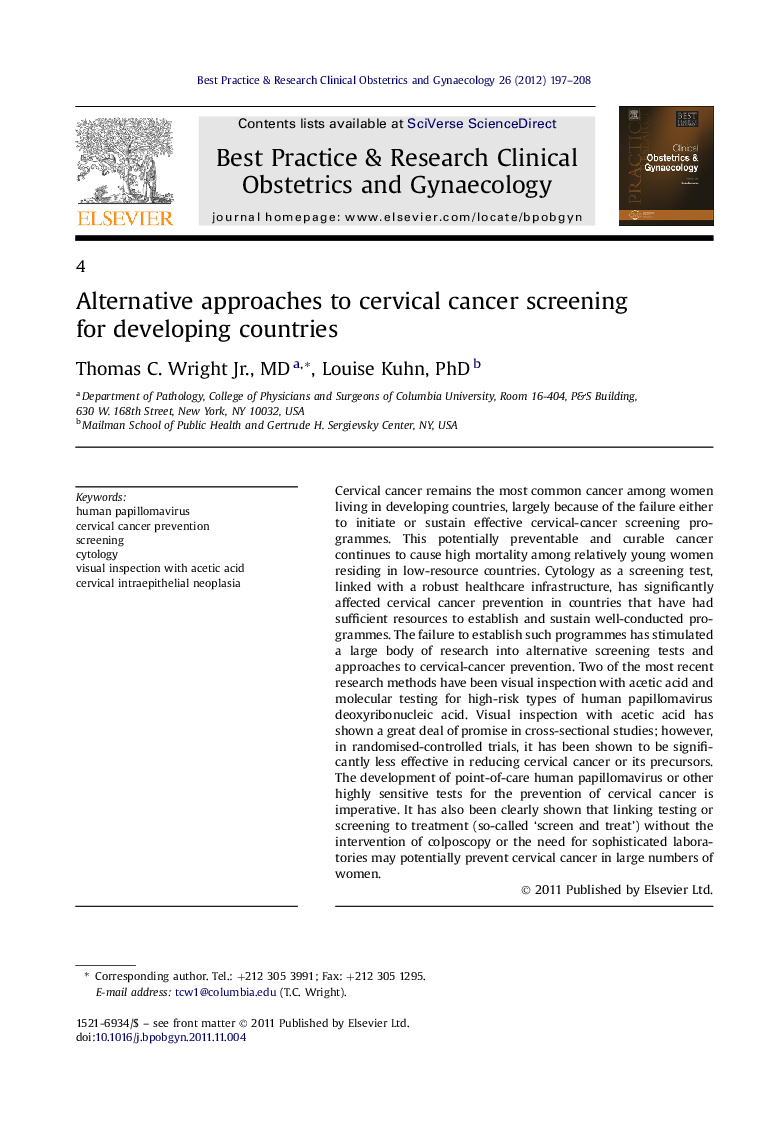| Article ID | Journal | Published Year | Pages | File Type |
|---|---|---|---|---|
| 3907799 | Best Practice & Research Clinical Obstetrics & Gynaecology | 2012 | 12 Pages |
Cervical cancer remains the most common cancer among women living in developing countries, largely because of the failure either to initiate or sustain effective cervical-cancer screening programmes. This potentially preventable and curable cancer continues to cause high mortality among relatively young women residing in low-resource countries. Cytology as a screening test, linked with a robust healthcare infrastructure, has significantly affected cervical cancer prevention in countries that have had sufficient resources to establish and sustain well-conducted programmes. The failure to establish such programmes has stimulated a large body of research into alternative screening tests and approaches to cervical-cancer prevention. Two of the most recent research methods have been visual inspection with acetic acid and molecular testing for high-risk types of human papillomavirus deoxyribonucleic acid. Visual inspection with acetic acid has shown a great deal of promise in cross-sectional studies; however, in randomised-controlled trials, it has been shown to be significantly less effective in reducing cervical cancer or its precursors. The development of point-of-care human papillomavirus or other highly sensitive tests for the prevention of cervical cancer is imperative. It has also been clearly shown that linking testing or screening to treatment (so-called ‘screen and treat’) without the intervention of colposcopy or the need for sophisticated laboratories may potentially prevent cervical cancer in large numbers of women.
